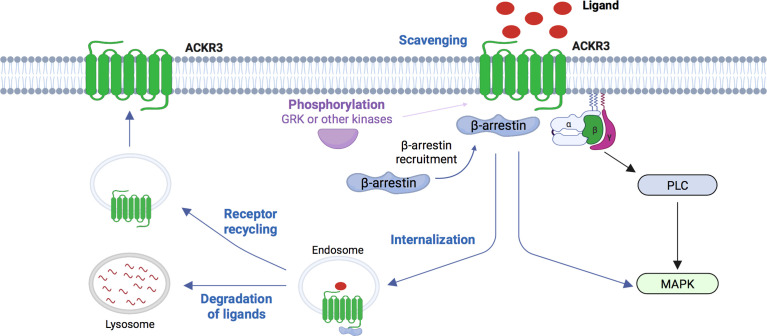Figure 1.
Schematic representation of signaling pathways for ACKR3. Chemokines ligands CXCL12 and CXCL11 can induce phosphorylation of ACKR3 by GRK or others kinases, the recruitment of β-arrestins and trigger intracellular G-protein independent signaling. ACKR3 is also able to scavenge various ligands (CXCL12, CXCL11, ADM, PAMP, PAMP12, opioїd peptides) at the cell surface, internalized these ligands which subsequently result in degradation in lysosome while the receptor recycles to the cell membrame. ACKR3 is also able to interact with G-proteins without to lead to their activation. However, in two specific cellular types, primary rodent astrocytes and human glioma cells, ACKR3 can be coupled to Gα-protein and triggers PLC and MAPK activation. GRK, G-protein receptor kinase; ADM, adrenomedullin; PAMP, proadrenomedullinN-terminal 20 peptide; PLC, phospholipase C; MAPK, mitogen-activated protein kinase. (Figure created with BioRender.com).

